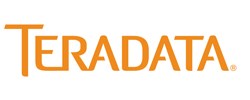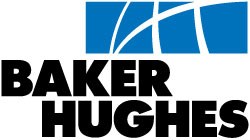Whitepapers
World Oil white papers include literature on the latest trends, development and advances in the offshore and onshore oil and gas industry, including technology and technologies relating to operations, shale, technology, subsea, deepwater, rig activity, drilling, innovations in the oil and gas industry and more.

Better Safety, Better Business: Maintain Compliance and Drive Revenue: Put All of Your Data to Work
July 08, 2015
Sponsored by: Teradata
If you’re like many oil and gas companies, you’re already collecting massive amounts of health, safety, security, and environment (HSSE) data. But how long does it take to act on it? The answer, of course, is anywhere from months to years. Some companies make the mistake of regarding HSSE compliance as a necessary evil. That doesn’t need to be the case. HSSE efforts can drive you forward, helping you gain greater efficiency and additional revenue. HSSE compliance can be a framework for optimizing operations, not just another regulatory burden to endure. You can run your business on HSSE principles—and win. Teradata can show you how.

Breaking the Application Barrier: Why Data is the Most Valuable Asset in the Oil and Gas Industry
July 08, 2015
Sponsored by: Teradata
Many oil and gas professionals live in a constant state of uncertainty. They simply don’t know if their assets are performing up to potential. All they know is that they run the business on averages, and the averages seem to shake out in their favor. But this lack of certainty doesn’t have to be your reality. In fact, you have the capacity to proactively gauge the performance of your oil and gas assets—not just every once in a while, but every moment, and on demand. In this paper we take a look at the current limitations of the application-driven environment, and we consider how an integrated data solution can offer deeper insight for sustainable competitive gains.

Don’t Miss the Unconventional Resource Revolution’s Next Wave
June 15, 2015
Sponsored by: Baker Hughes
It’s time for operators developing North America’s unconventional oil and gas reservoirs to embrace a new business model. Today, the typical business model for developing unconventional assets is still based on a cycle of repeatedly drilling, completing, and fracturing new wells. In today’s climate of depressed oil prices, that model is both unprofitable and unsustainable. It’s unnecessarily costly and often leaves more than 90% of the recoverable hydrocarbons in place.
However, operators can reinvent their business models for unconventional assets through a process of strategic well rejuvenation. This white paper details a data-driven, science-based method to help operators better understand their reservoirs and uncover the reasons behind poor well performance to identify and implement the most profitable well rejuvenation programs—maximizing recovery rates, cash flow and ROI at a lower CAPEX than possible using the current business model.

Efficiency, Visibility and Reliability Keys to lower costs and greater profitability in oil and gas operations
March 02, 2015
Sponsored by: Siemens
Falling oil prices and collapsing profit margins are driving the industry to lower costs. Reducing labor costs and gaining supplier concessions can help, but output must meet buyer commitments. This white paper addresses how automation can increase operating efficiency, visibility and reliability to help lower costs and boost profitability. It also provides four steps to accelerating automation’s deployment in oil and gas, while improving overall effectiveness.

Enterprise SSD: More Than Just a New Kind of Hard Drive
October 20, 2014
Sponsored by: HGST
SSDs deliver unmatched data center performance. As solid-state drives (SSDs) are increasingly deployed throughout the enterprise, data center and IT managers need to fully understand the performance and benchmarking shift that come with SSDs. Enterprise environments are demanding storage components with 24x7 workload and duty cycle abilities that are beyond those of most SSDs derived from consumerbased drives intended for use in laptop environments. Consumers don’t shop for steady-state performance and endurance, but these requirements are paramount in server and enterprise applications. Enterprise SSD: More Than Just a New Kind of Hard DriveThis white paper will explore NAND flash technology and its inherent problems, and explain client applications for SSDs, including laptops, cameras, PCs and mobile phones. Client SSD applications typically serve a single system accustomed to running no more than eight hours a day, five days a week on small datasets in read-intensive operations with low to minimal write activity.


